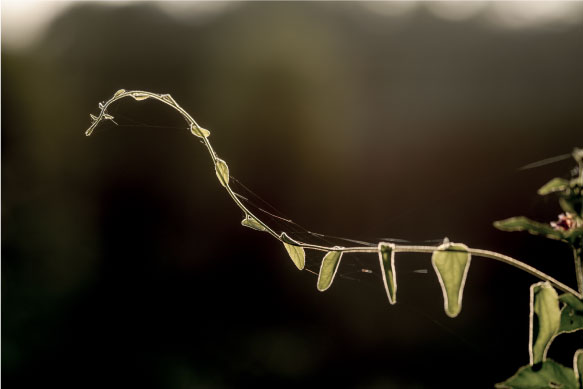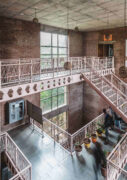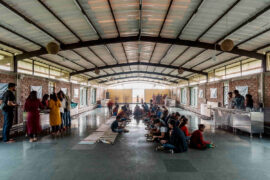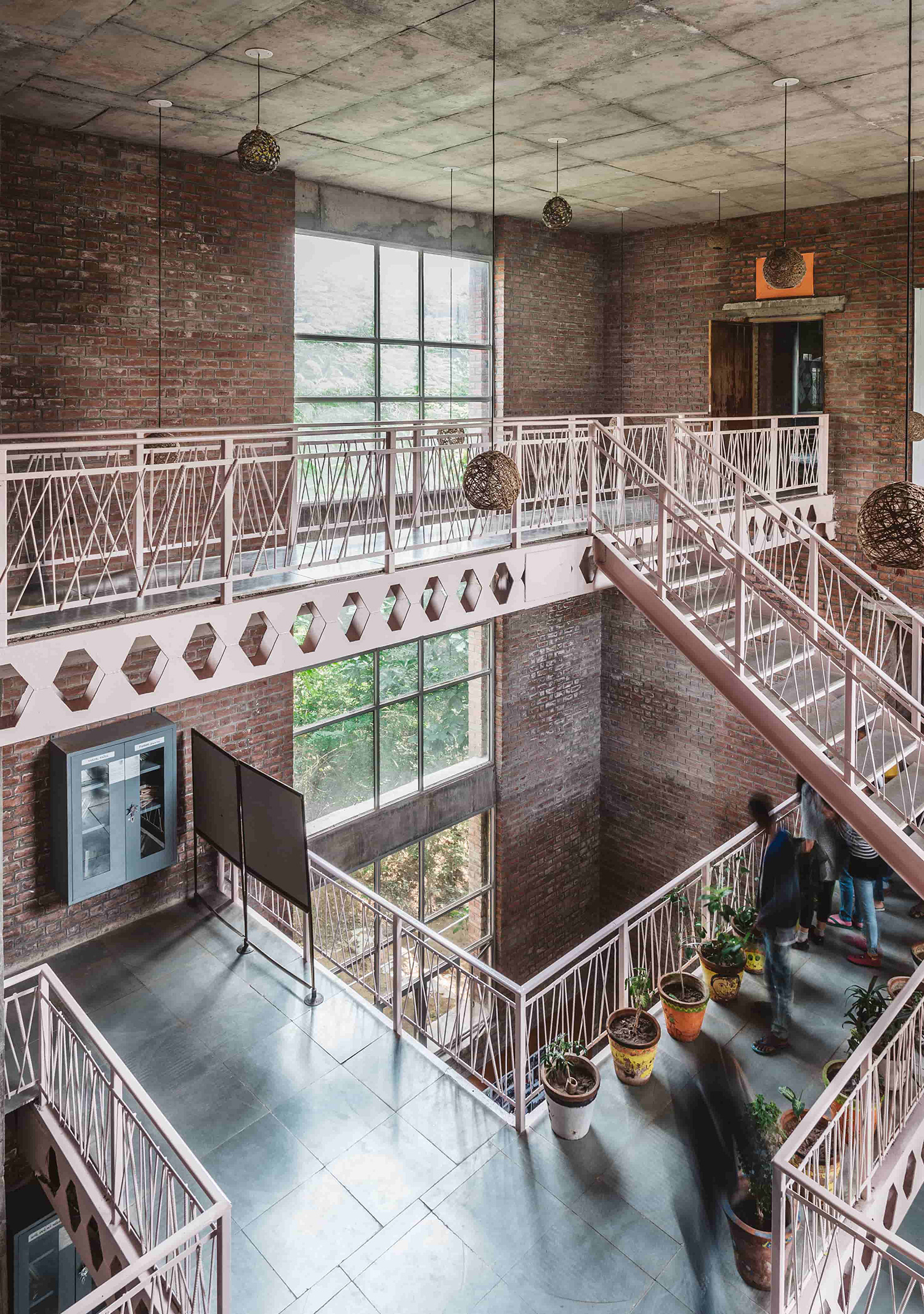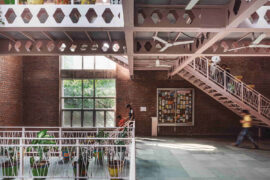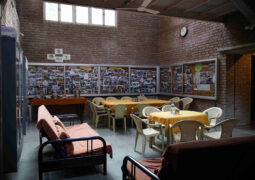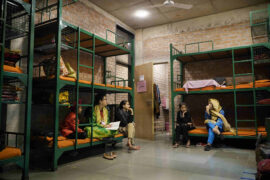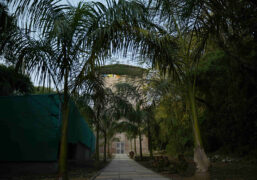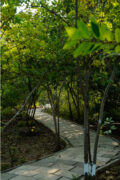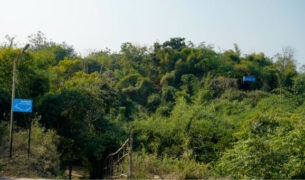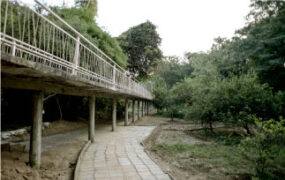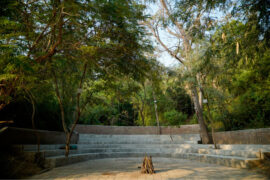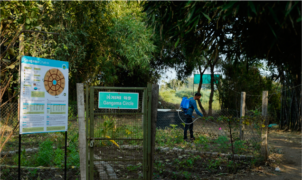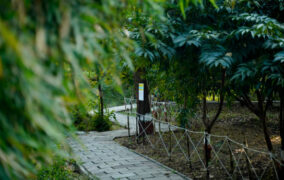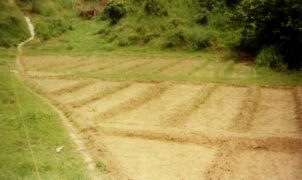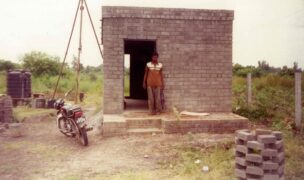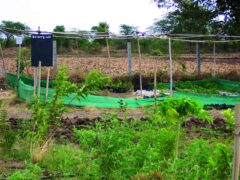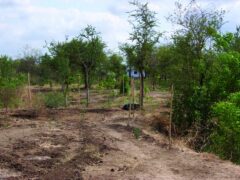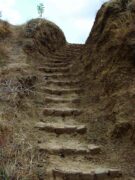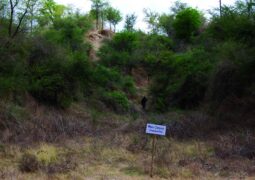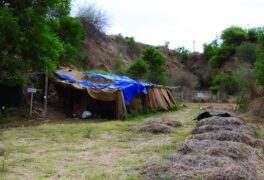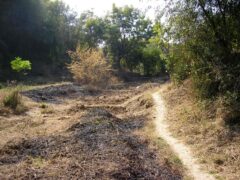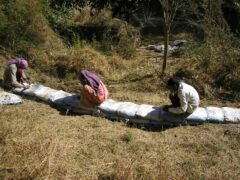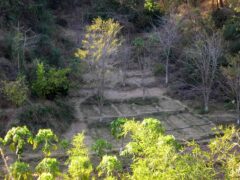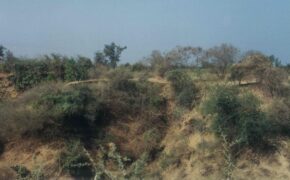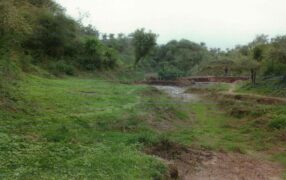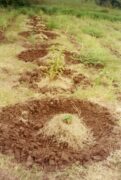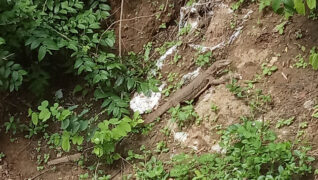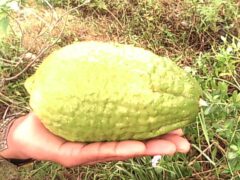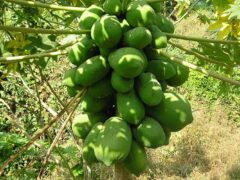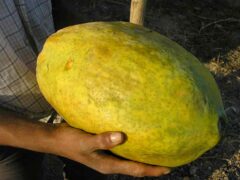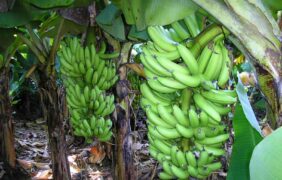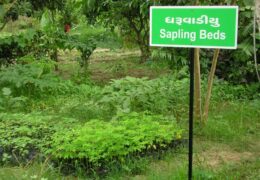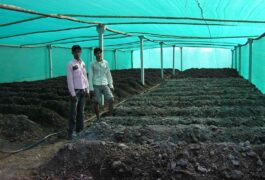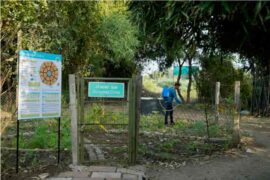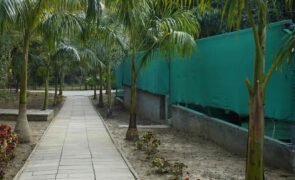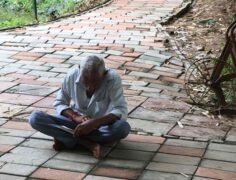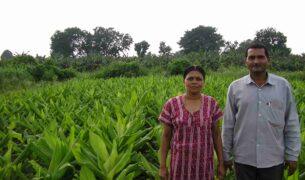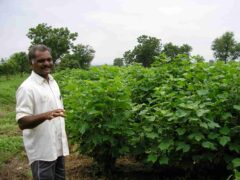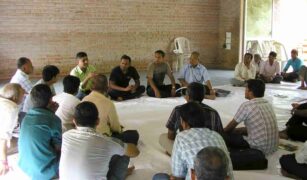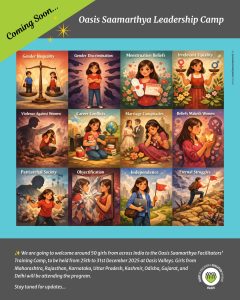







OASIS Valleys
Oasis Valleys: Powerful Centre for Man-making
Since early years of Oasis, we envisioned a place which is not merely an institution, a building or even a place for organizing our programs; but a place that emanates some very strong and useful messages for society. Thoughts that make human life more passionate, full of love, happier, more meaningful; something that contributes in the society’s evolution in a major way.
In December 2002, 9 acres of ravine, almost waste-land, was purchased at village Mandva, on the banks of river Narmada, near
Chandod, dist. Vadodara (Gujarat, India). We immediately started
Organic Farming. During 2004-05, a grand campus was conceptualized and development began. Construction of Institution building was done in two phases and the complete Institute was inaugurated in
2015.
Today, ‘Oasis Valleys’ is a nerve-centre of Oasis Movement and perhaps Asia’s first Institution of its kind for Character-building
and Scientific Human Development Courses. Residing in the midst of a beautiful and lush green campus, it is a model institution, where ideals for the best of life are practiced, be it Construction, Utilization of Natural Resources & Energy, Agriculture or simply living there.


Why we created Oasis Valleys
- To create a unique multi-sector model for a better society
through entrepreneurship in social development. - To create a live emblem of utilization of natural resources –
be it soil, water, sun, wind… and the first and the most important
amongst all – HUMANS! - To create a place for scientific transformation of people into
responsible citizens, who willingly contribute collectively for
social/national development. - To facilitate the process of Learning and Teaching/Sharing
the concepts of Self-Leadership for development of
different communities of the society (urban as well as rural)
at a larger scale. - To create a centre for self-rejuvenation (physical as well as
psycho-spiritual).

Coming together is a beginning. Keeping together
is a progress. Working together is a success.
~ Henry Ford

Oasis Valleys Institute Creation: Central Team
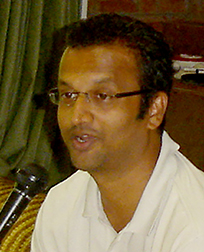
Parag Shah
Overall Project Vision,
Leader
(Project & Team)
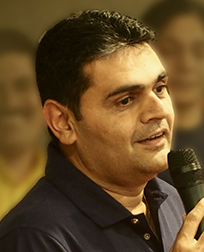
Ar Snehal Shah
Design Head &
Architect In Charge
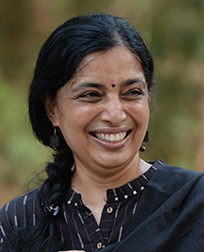
Sheeba Nair
Project Facilitator
(Policies, Team, People
& Resources)
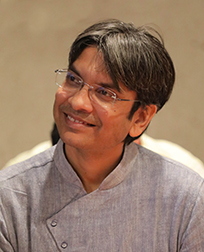
Siddharth Mehta
Project Leader
Resource Generation
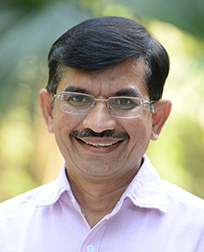
Alkesh Raval
Project Coordinator
(Execution &
Nodal work)
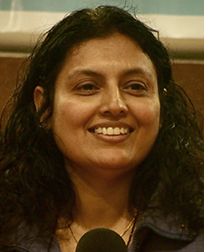
Preeti Nair
Chief Coordinator
Finance & Legal
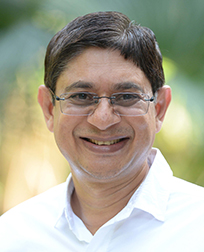
Sanjiv Shah
Team Guide
(Values & Systems)
Project Consultants & Support Team
Design
Ar Apurva Rana Architect In Charge
Ar Nainita Rana Consulting Architect, Design Team
Ar Saloni Shah Consulting Architect, Design Team
Resources
Pinal Shah Coordinator (Surat)
Dr Divya Sachdeva Coordinator (Surat)
Pravin Shah Coordinator (Surat)
Dr Neha Vakharia Coordinator(Gujarat)
Dr Maya Soni Coordinator (Ahmedbad)
Project Execution
Sanjay Ruparelia Project Contractor
Resources
Vijay Dalal Coordinator (USA)
Rajni Reshamwala Coordinator (Mumbai)
Dhiru Mehta Coordinator (Mumbai)
Hiral Patel Coordinator (Vadodara)
Yogesh Patel Coordinator (Surat)
Dr Ami Desai Central Co-ordination
Project Execution
Yogesh Patel Project Co-ordination & Resource Management
Viral Patel Project Management & Execution
Kartik Katrodiya Project Contractor
Dr Pallavi Panchal On-site Support
Recognition

IIID | West Zone | Winner |
Institution & Public Building
2018

HUDCO Design Award 2018 | Runners-up |
Green Building
2018
The Institute
Characteristics of Institute Building
- Expose brick-masonry & RCC
- Double wall thermal insulation from outer atmosphere
- Material palette closest to nature
- Minimal waste production with 100% water recycling
- Surrounded by abundance of nature
- 5 storied building, with total construction of app. 32000 sq.ft.
- 2 Halls with capacity to hold 100 children or 70 adults, each
- 2 Dormitories for boarding 60 children or adults, each
- 11 Residential Rooms for boarding 30 adults
- A big Dinning-cum-gathering hall for 300 people
- A Kitchen for 250+ people
- Offices, Library, Stores, Lounges, Multipurpose Basement

The law of harvest is to reap more than you sow.
Sow an act, and you reap a habit.
Sow a habit
and you reap a character.
Sow a character and you reap a destiny.
~ By Ralph Waldo Emerson

The Campus
9 acres ravine-contour land, valley depth average 45ft. (2 acres plateau, 7 acres slopes & valleys)
1.5 acres of valley-basins are used for growing 10-12 vegetables & spices completely organic way.
Paved Pathways of app. 2500 mts length, reaching all the major parts of campus.
A Pond with capacity of appox. 8 Lac Lts of water.
During our continuous search for better life, we came across a book by Leo Tolstoy (famous Russian philosopher & writer) – ‘What then
must we do?’. It is a conscience disturbing book based on concept of
Bread Labour. It moved us deeply and we decided to take on Bread
Labour with Agriculture as one them. We learned that Organic
Farming is the best practice and long term solution to poverty of
farmers and climate change-global warming.
Organic Farming does not involve usage of chemicals in the form of
fertilizers and pesticides. It is farming done with the help of
organisms living on and under the earth, the whole eco-system.
Organic Farming means appropriately helping mother earth to
grow most delicious fruits, vegetables, grains etc. It’s a synergy with
the whole life system. It also means loving yourself and loving life.
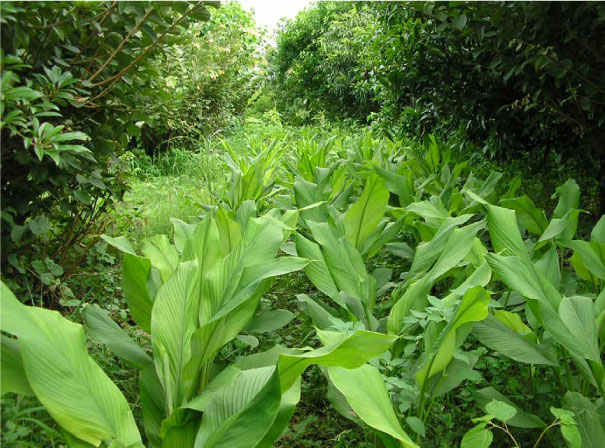

To serve is beautiful, but only if it is done with joy and a whole heart and a free mind.
~ Pearl S. Buck
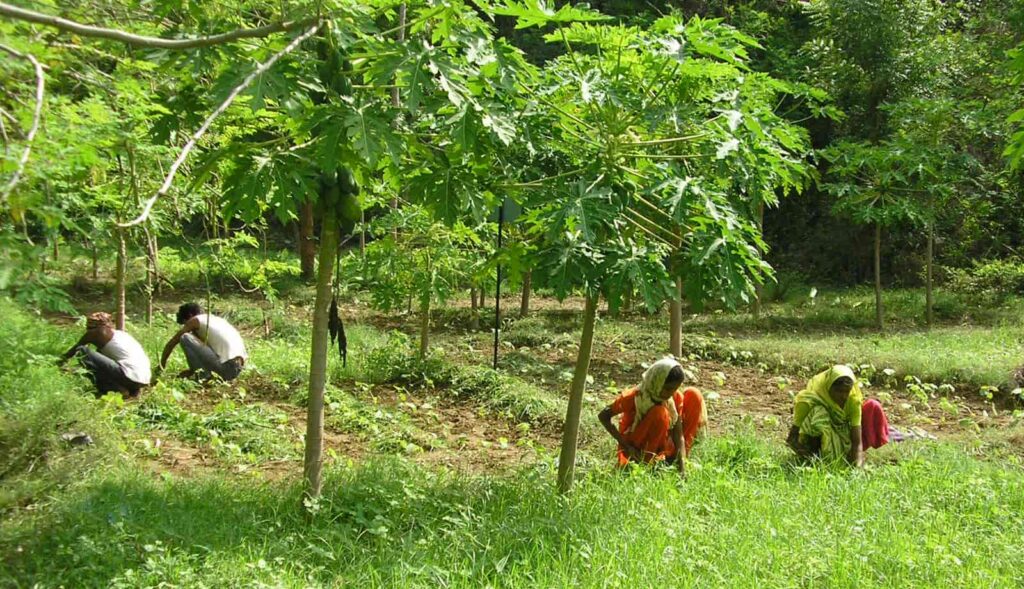
The Toarch Bearer
All who have visited Oasis Valley know Mehul Panchal. A seeming calm looking guy has gone through an ocean of
emotions and has crossed mountains of struggles within his
heart, unknown even to his near and dear ones. He is a walking
demonstration of how one can sculpt one’s life given some
encouragement and support.
Mehul is an Electronics Engineer by qualification. He joined
Oasis when he was still doing his graduation. Inspired by the
environment of friendship, he soon got involved in various
activities and projects undertaken by Oasis. Regular self-development sessions, camps, outings, social events, etc., brought
out his self-confidence and creative side. By the time he
completed his graduation, he started his career as an engineer.
Very soon he got involved in the processes of becoming a social
welfare entrepreneur at Oasis.
He slowly started recognizing his love for nature and environment, which led him to think of the state of farmers and agriculture in our country. When Oasis thought of creating a model institute for nation-building, he chose to take up the project of Organic Farming.
Years went by without any solace of ‘success’. Family situations, financial pressure and personal crisis made the going tough for Mehul. Mehul says, “The support of friends, who were all struggling to find their own mission, helped me. Many times I was tired, felt lonely and almost on the verge of giving up. But I am glad I survived and am in a position to guide thousands of farmers in my lifetime now. I have no regrets about quitting my traditional career and choosing an unconventional lifestyle. I am happily looking forward to being a part of a big solution for my country as well as the planet.”
Mehul has now started educating farmers in the neighbourhood as he has a model farm ready now. He plans & conducts a number of events to sensitize the future generations in coming years and decades.
Mehul Panchal
Our Model of Organic Farming
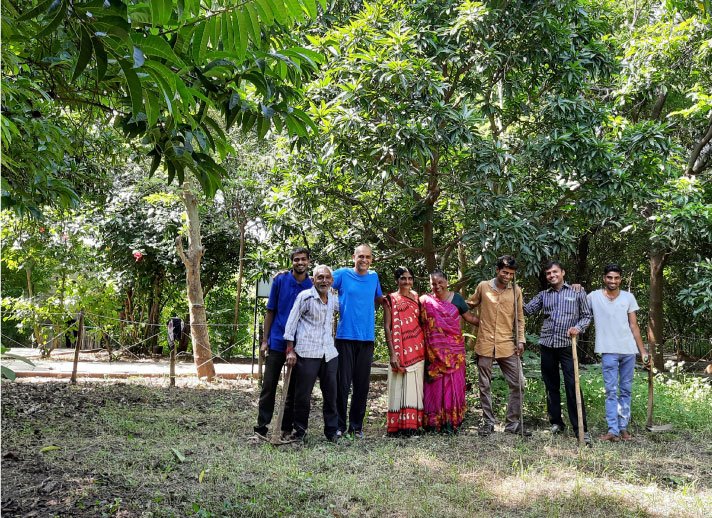
Organic Farming Team
AGRICULTURE: 1.5 acres
- 12-15 selected varieties of seasonal vegetables and fruits
HORTICULTURE: Forest & Fruit Trees – Total 3050+
- 2150 forest trees, maily Bamboo, Neem, Silk Cotton, Bombex,
Gulmohar, Peltophorum, Cassia, Rain tree, Spanish Cherry, etc., and
Medicinal & herbal trees like Harde, Baheda, Indian Gooseberry
(Amla), Bijora, Beal, Moringa etc. - 900 fruit trees, mainly Custard Apple, Guava, Indian Gooseberry,
Lime, Sweet-lime, Mango, Sapota, Pomegranate, Cashew-nuts,
Mulberry, Phalsa, etc.
NATURE CONSERVATION
- No alteration of contours, slopes. All kept as it is.
- Check-dams to prevent the damage from run-away rain water.
- Local variety of Bamboo to save the soil from erosion.
- Not to disturb the original habitat of creatures like wild heir,
porcupines, snakes, rats, monitor lizards etc.

Growth is the only evidence of life.
~ John Henry Newman
